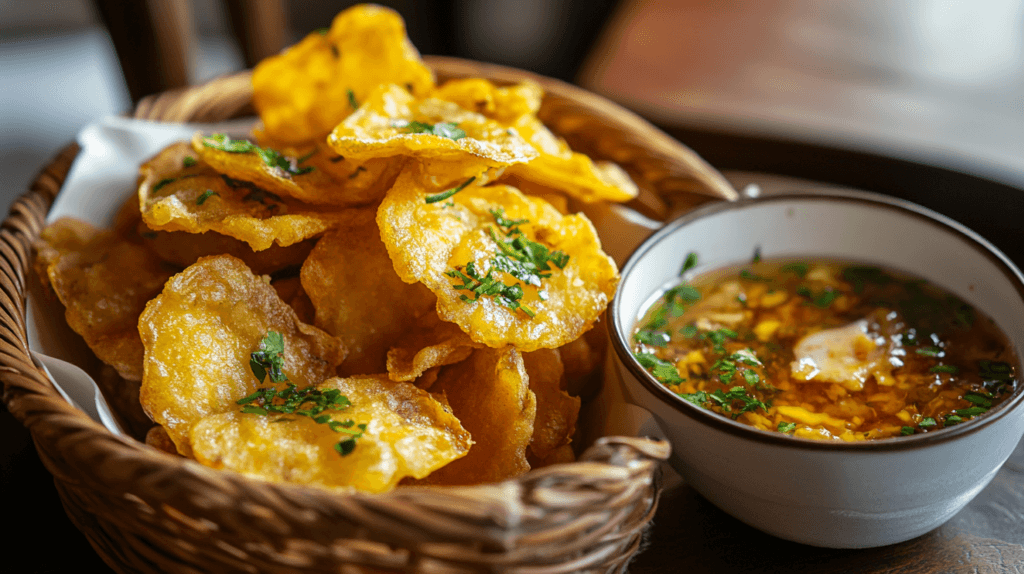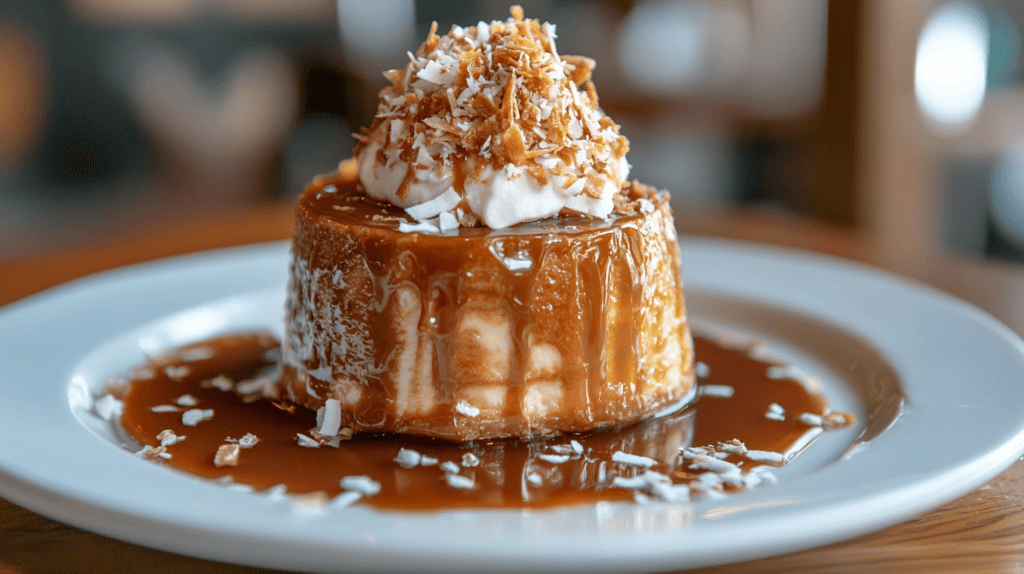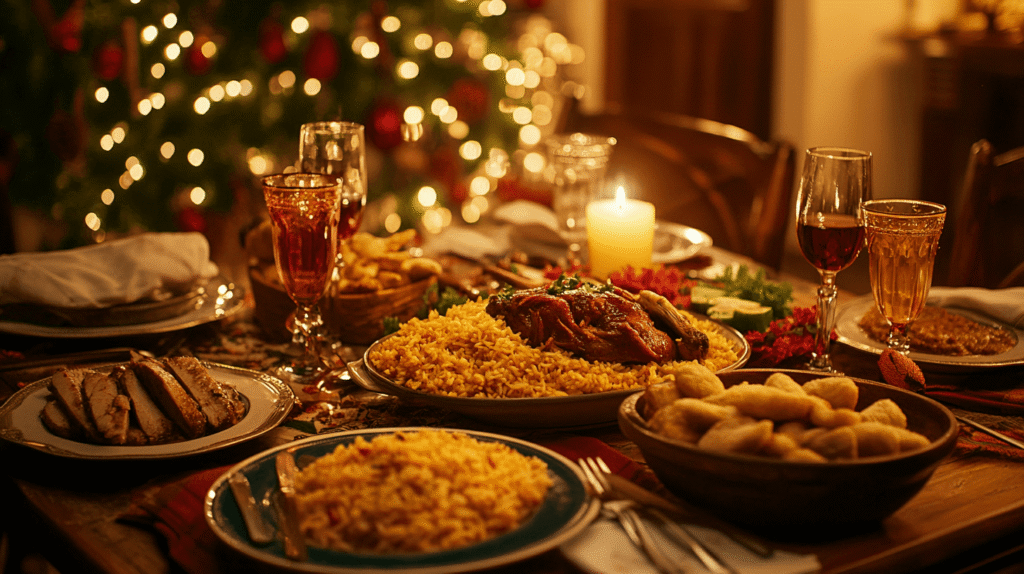Puerto Rican cuisine is a vibrant blend of cultural influences, and dinner is often the most celebrated meal of the day. So, what do Puerto Ricans eat for dinner? The answer lies in a variety of flavorful dishes made with hearty ingredients like rice, plantains, pork, and seafood. From classics like arroz con pollo to the iconic mofongo, Puerto Rican dinners showcase the island’s rich culinary heritage. Let’s uncover the most popular dishes and traditions that make these meals so special.
Table of Contents
The Essentials of Puerto Rican Cuisine
Key Ingredients in Puerto Rican Dishes
When exploring what Puerto Ricans eat for dinner, it’s crucial to understand the ingredients and techniques that define their cuisine.. Staples like plantains, rice, beans, and pork take center stage, while garlic, cilantro, and sofrito (a mix of onions, peppers, garlic, and herbs) add layers of aromatic depth. Additionally, coconut, yucca, and tropical fruits like mango and guava bring sweetness and balance to many dishes.
Common spices include adobo, a seasoning mix of garlic, oregano, pepper, and salt, as well as sazón, which adds a distinct orange hue and rich flavor to stews and rice dishes. These elements combine to form the foundation of Puerto Rican cooking.
Common Cooking Techniques
Puerto Rican dinners often rely on traditional cooking methods passed down through generations. Stewing and roasting are popular techniques, allowing flavors to meld over time. Frying is also common, particularly for dishes like tostones (fried green plantains) and empanadillas (turnovers stuffed with meat or seafood).
Another signature technique is “mashing,” which is essential for creating mofongo, where fried plantains are mashed with garlic and pork cracklings. Each method showcases the vibrant and hearty nature of Puerto Rican cuisine.
Traditional Puerto Rican Dishes for Dinner

Arroz con Pollo (Chicken and Rice)
A quintessential Puerto Rican dish, arroz con pollo is a one-pot meal where chicken is simmered with rice, sofrito, and annatto for a flavorful, aromatic dinner. It’s often served with a side of habichuelas guisadas (stewed beans) or a simple green salad.
Mofongo (Mashed Plantains with Garlic)
Mofongo is a beloved Puerto Rican specialty made from mashed fried green plantains, seasoned with garlic, and often stuffed with seafood, chicken, or pork. It’s hearty, savory, and typically served with a side of broth to pour over the dish.
Asopao de Pollo (Puerto Rican Chicken Stew)
Asopao de pollo is a comforting, soup-like stew made with chicken, rice, sofrito, and a medley of vegetables and spices. It’s perfect for family gatherings or a rainy evening, offering warmth and rich flavor in every bite.
Pernil (Roast Pork Shoulder)
Pernil is a must-have for Puerto Rican dinners, especially during celebrations. This slow-roasted pork shoulder is marinated with garlic, oregano, and adobo, resulting in tender meat with crispy, flavorful skin. Pernil is often paired with arroz con gandules (rice with pigeon peas) to create a classic Puerto Rican dinner plate.
Popular Side Dishes in Puerto Rican Dinners
Tostones and Amarillos (Fried Plantains)
Plantains are a cornerstone of Puerto Rican cuisine, appearing in various forms during dinner. Tostones are green plantains sliced, fried, smashed, and fried again, resulting in crispy, savory rounds. Amarillos, on the other hand, are sweet, ripe plantains that are fried until caramelized. These two versions of plantains are often served as sides to complement savory mains like pernil or mofongo.
Arroz con Gandules (Rice with Pigeon Peas)
Arroz con gandules is Puerto Rico’s national dish and a staple at dinner tables. The combination of fluffy rice, pigeon peas, and sofrito, cooked with a hint of pork and spices, creates a fragrant and filling side dish. It’s a perfect accompaniment to roasted meats and stews.
Habichuelas Guisadas (Stewed Beans)
Habichuelas guisadas, or stewed beans, are a hearty side dish often served with white rice. These beans are simmered with sofrito, tomatoes, and chunks of ham or chorizo, creating a flavorful sauce. The dish is a comforting addition to any Puerto Rican dinner.
The Role of Soups and Stews at Dinner
Sancocho (Meat and Root Vegetable Stew)
Sancocho is a hearty stew made with a mix of meats (often chicken, beef, or pork) and root vegetables like yucca, plantains, and yautía. Flavored with sofrito and spices, it’s a favorite during cooler weather or special family gatherings. This dish reflects Puerto Rico’s emphasis on hearty, nourishing meals.
Caldo Santo (Seafood Soup)
A unique dish from Puerto Rico’s coastal regions, caldo santo is a seafood-based soup made with coconut milk, fish, root vegetables, and a blend of island spices. It’s creamy, aromatic, and perfect for seafood lovers looking for a taste of Puerto Rican tradition.
Desserts That Complete Puerto Rican Dinners

Flan (Caramel Custard)
Flan is one of Puerto Rico’s most beloved desserts and a classic way to end dinner. This creamy caramel custard has a silky texture and is lightly flavored with vanilla or coconut. Its simplicity and elegance make it a favorite for both everyday meals and celebrations.
Tembleque (Coconut Pudding)
Another dessert staple is tembleque, a coconut pudding made with coconut milk, sugar, and cornstarch, topped with a sprinkle of cinnamon. Its name, which means “wiggly” in Spanish, describes its soft, jiggly texture. It’s a delightful, sweet ending to a traditional Puerto Rican dinner.
Beverages That Pair with Dinner
Coquito (Coconut Nog)
Coquito is a creamy coconut-based drink that’s especially popular during the holiday season but is also enjoyed with dinner year-round. Made with coconut milk, condensed milk, cinnamon, and a splash of rum, it’s a sweet and festive drink that pairs perfectly with savory dishes.
Refresco de Tamarindo (Tamarind Juice)
For a non-alcoholic option, refresco de tamarindo is a refreshing tamarind juice often served with meals. Its tangy and slightly sweet flavor provides a delightful contrast to rich and hearty Puerto Rican dishes.
The Puerto Rican Dining Experience
Family and Community at the Dinner Table
Dinner in Puerto Rican culture is more than just eating; it’s a time for family and community. Meals are often shared around large tables, with everyone contributing to the cooking and preparation. Conversations, laughter, and music are common elements of dinner, reflecting the island’s lively and social nature.
Dining Customs and Etiquette
In Puerto Rico, hospitality is key. Guests are always treated to abundant servings of food, and it’s customary to offer seconds (or even thirds). Eating together is a cherished tradition, and meals are often followed by sobremesa, the practice of lingering at the table to talk and connect.
How Puerto Rican Dinner Traditions Are Evolving
The Influence of Globalization
As Puerto Rico becomes increasingly globalized, its dinner traditions are evolving. Modern kitchens blend traditional flavors with international influences, introducing dishes like sushi rolls with plantains or tacos filled with pernil. These fusion dishes highlight the creativity and adaptability of Puerto Rican cuisine.
Fusion Foods in Puerto Rican Cuisine
Restaurants and home chefs are reimagining classic dishes by combining Puerto Rican ingredients with techniques from other cultures. For example, mofongo burgers and tropical-inspired pasta dishes showcase how the island’s food is evolving while staying true to its roots.
Easy Recipes for Puerto Rican Dinners
If you’re inspired to try cooking some Puerto Rican classics, here are a few simple recipes to bring the island’s flavors to your table.
Arroz con Pollo (Puerto Rican Chicken and Rice)
Ingredients:
- 2 cups white rice
- 1 pound chicken (thighs or drumsticks)
- 1/4 cup sofrito
- 2 tablespoons olive oil
- 1 teaspoon sazón seasoning
- 1/2 cup tomato sauce
- 3 cups chicken broth
- Salt and pepper to taste
Instructions:
- Heat olive oil in a large pot over medium heat. Season the chicken with salt and pepper and brown on all sides. Remove and set aside.
- Add sofrito to the pot and cook for 2-3 minutes until fragrant.
- Stir in tomato sauce and sazón, then add the rice, mixing well to coat.
- Return the chicken to the pot and pour in the chicken broth. Bring to a boil, then reduce heat to low and cover.
- Cook for 25-30 minutes, stirring occasionally, until the rice is tender and the chicken is fully cooked.
Mofongo (Mashed Plantains with Garlic)
Ingredients:
- 4 green plantains
- 3 garlic cloves, minced
- 1/2 cup pork cracklings (or bacon bits)
- 1/4 cup olive oil
- Salt to taste
Instructions:
- Peel the plantains and cut them into 1-inch chunks. Fry in hot oil until golden and tender.
- In a mortar and pestle, mash the garlic with salt until it forms a paste. Add the fried plantains and pork cracklings, mashing everything together.
- Drizzle with olive oil and shape the mixture into small balls or serve as a mound.
- Pair with a side of broth or grilled meat for a complete dinner.
Tostones (Savory Fried Plantains)
Ingredients:
- 2 green plantains
- Vegetable oil for frying
- Salt to taste
Instructions:
- Peel the plantains and cut them into 1-inch thick slices.
- Fry the slices in hot oil until lightly golden (about 3 minutes). Remove and let cool slightly.
- Flatten each slice using the bottom of a glass or a tostonera.
- Return the flattened slices to the oil and fry until crispy and golden brown. Sprinkle with salt and serve warm.
FAQs About Puerto Rican Dinners
What is the most popular Puerto Rican dish for dinner?
Arroz con gandules served with pernil is one of the most popular dinner combinations in Puerto Rican cuisine. For more inspiration, try your hand at some easy Puerto Rican recipes to recreate the flavors at home.
Are Puerto Rican dinners healthy?
Many dishes feature fresh ingredients like vegetables and legumes, but fried items like tostones or pasteles can add extra calories. To round out your meal, explore popular Puerto Rican desserts for a sweet touch.
Do Puerto Ricans eat late dinners?
Yes, dinner in Puerto Rico is often eaten later in the evening, around 7 PM to 9 PM, as it’s common to enjoy a leisurely meal after work or social gatherings.
What makes Puerto Rican food unique?
The fusion of Spanish, African, and Taíno influences creates a rich and flavorful cuisine. Learn more about the island’s culinary identity and whether Puerto Rican food is spicy.
Is Puerto Rican food spicy?
Puerto Rican food is flavorful but not overly spicy. The focus is on savory and aromatic seasonings rather than heat.
What is a typical holiday dinner in Puerto Rico?
A typical holiday dinner includes pernil, arroz con gandules, pasteles (a type of tamale), and coquito to drink, with flan or tembleque for dessert.
Conclusion
Puerto Rican dinners are a celebration of bold flavors, history, and culture. From hearty classics like mofongo and arroz con gandules to comforting desserts like tembleque, every meal tells a story of community and heritage. If you’re ready to dive into the world of Puerto Rican cuisine, start by exploring easy and flavorful dishes that bring the taste of the island to your kitchen.
Printable Recipe Card
Want just the essential recipe details without scrolling through the article? Get our printable recipe card with just the ingredients and instructions.

